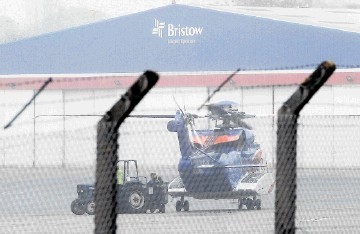
Aviation watchdogs have ordered more safety checks and upgrades on Super Puma helicopters.
The European Aviation Safety Authority has issued fresh Airworthiness Directives for the AS332L2 and EC225 aircraft.
The Airbus manufactured choppers were banned from flying in the UK until recently after a fatal crash off Norway which killed 13 people.
During investigations into the incident, fatigue and surface degradation was discovered in the main gearbox.
This led to the grounding of UK and Norwegian operations until it could be determined if this was a contributing factor to the accident or if it was a consequence of another fault.
It is thought the rupture of a second stage planet gear “likely” caused the Norway accident but the root cause of the failure is still not understood.
The CAA announced plans to lift the flight ban earlier this month despite this being the case.
The move was met with anger from workforce representatives who claim that there is no need for the aircraft since alternatives were sourced.
The new CAA directive states that if a helicopter operators wants to return a Super Puma to service they must carry out certain “in-house” upgrades.
The work includes complying with a previously issued ‘airworthiness directive’ which called for increased maintenance checks on a gearbox particle detector and oil cooler inspection as well as the replacement of the second stage planet gear assembly.
Super Puma operators must also fit a Full Flow Magnetic Plug to support the inspection of the main gearbox oil system particle detection and a full safety case must be prepared.
Now additional maintenance checks and safety upgrades have been issued by EASA.
The work includes replacing parts of the second stage planet gear assembly as well as an upgrade to the Full Flow Magnetic Plug.
A separate Airworthiness Directive also asks operators of the two aircraft variants replace pins on the main gearbox suspension bars.
This is to prevent tightening torque loss.
EASA added: “The condition, if not corrected, could lead to structural failure of the main gearbox suspension bar attachement pins and/or fitting”.
Metal particles broken off from the fast moving gearbox parts, known as spalling, are thought to have played a part or indicated an issue in several helicopter accidents in recent years, including the 2009 crash off Peterhead which claimed 16 lives.
These particles are normally ‘detected’ by magnetic plugs which pick up the fragments and alert the pilot, typically resulting in the crew putting the aircraft down safely.
However Super Puma manufacturer Airbus now wants to improve the detection rates of gearbox spalling by fitting these additional safety measure.
It comes after a test revealed that the total detection rate – the % of all free magnetic particles expected to be collected on the plugs – was just 12%.
Airbus is currently canvassing opinion about the safety overhaul made in light of the Norway crash.
The preliminary report from the the Accident Investigation Board Norway states that Airbus launched a main gearbox spalling test program following the G-REDL accident in 2009.
The single test, presented to the AIBN, showed that the total detection rate – % of all free magnetic particles expected to be collected on the plugs – is 12 %, while 44 % of the particles were said to end up in the oil filter.